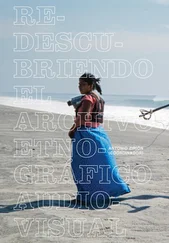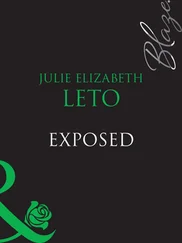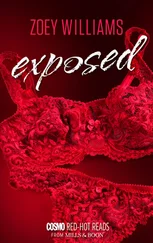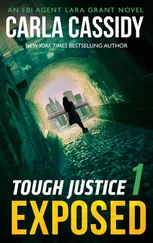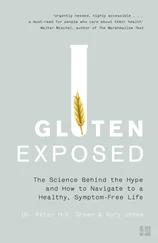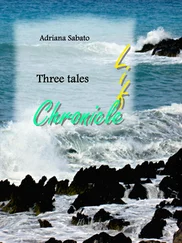Selk’nam, 69
seredniak (middle person), 155–56
Sergeev, 160
Shcherbak, Yurii, 83
Shelter complex, 20
sick role sociality: ambivalence underpinning, 235n.5; compensation into accumulation and, 92–94; confusing personal/intrafamilial processes of, 90–92; described, 89–90; during post-World War II economic expansion, 93. See also Anton; Lev
SIR (standardized incidence ratio) for leukemia, 9
skarha (complaint), 116–17
skin cancer, 110
Slavutych inhabitant (“C”), 154, 157
social acceptability levels model, 115–17
“social Chernobyl,” 61
The Socialist Party Program , 145
social justice, 16
social protection acts: complete name of, 230n.2; government expenditures/environmental controls due to, 83–84, 101; political/social changes due to, 24–25; radioecological measures required under, 82–83; on residency requirements for sufferers, 87. See also compensation ( kompensatsiia ); Ukrainian political economy
social rebuilding stories: Anna, 66–67, 70, 71, 72–74, 75, 76–77; on disability claims, 107–12; Ivan, 181–90; Kyryl, 131, 134–35, 138–43; Maria Ivanivna, 87–91, 96, 97; Oksana, 67, 68, 70–72, 73, 76; paradoxes of new world understood through, 149–51; Pavlo Strakhota, 94–96, 97; Rita Dubova, 121–24, 125–26, 128–30, 138, 233n.7; Vitalii, 67–69, 70, 72, 74, 75, 76. See also Anton; Lev
socio-mental laws ( sotsial’no-psikhicheskii), 26
somatization of fear, 9
Soviet-American bioscientific collaboration: bone marrow transplants given under, 45, 46–47; follow-up report on radiation by, 38–49; as techno-diplomacy, 44–45. See also International Chernobyl Project (1991)
Soviet Energy Ministry, 96
Soviet Finance Ministry, 96
Soviet Radiological Protection Board, 39
Soviet state economic planning committee ( Hosplan ), 97, 98
Soviet Union: approach to radiation protection by, 100, 177–78; association between Chernobyl and collapse of, 4; biological risk standard established by, 23–24; charges of genocide against, 23; Chernobyl explosion officially acknowledged by, 1; entitlement legacy of, 99; escalation of death rates during Chernobyl after-math, 146; First Five-Year Plan of, 224n.31; history of Ukraine as part of, 21–23; Homo Sovieticus of, 193, 238n.3; inflation/economic restructuring of former, 92–94; initial reprot to IAEA on, 225n.9; kul’turnost’ and lichnost’ of, 199, 200; laws governing occupational disability compensation of, 231n.20; liability limited by biological measurements, 35, 53, 120–21; Lysenkoism adopted by, 119–20, 233n.5; official downplay of Chernobyl incident by, 2; official statement on collaboration with IAEA, 226n.23; public policies followed by, 11, 12, 13–14; Ukrainian criteria for sufferers ( poterpili ) vs., 84–85; Western offers to assess meteorological situation rejected by, 38–39
Soviet work culture, 89–90
Stalinist collectivization campaigns, 22
state: liberty rights vs. claims rights and, 223n.30; medical documents “aesthetics” and intervention by, 123; public policies developed by, 10–11, 12, 13–14; reconstruction of population radiation dose exposure by, 100; responsibility/rights of healthy citizen to, 85; role as giver/taker of resources, 118; specific medical profile/relation of biological citizenship to, 111–12. See also Soviet Union; Ukrainian political economy
Steiner, George, 223n.24
stem cell research, 59–61
stochastic effects, 10, 100
storytelling. See social rebuilding stories
Strakhota, Pavlo, 94–96, 97
Strathern, Marilyn, 92
Strokats, Anna, 66–67, 70, 71, 72–74, 75, 76–77
Strokats, Oksana, 67, 68, 70–72, 73, 76
Strokats, Vitalii, 67–69, 70, 72, 74, 75, 76
structural violence patterns, 15
subbotnyk (Saturday volunteer), 198
sufferers ( poterpili ): average monthly compensation paid to, 19; as Clinic patient category, 154; compensation to disabled vs., 18; continued exposure of, 2–3; diagnosed at Institute of Biophysics (Moscow), 2; disability among, 102 fig; disabled groups advocates for, 143–48; dosimetric passports identifying, 83; financial liability of normal citizens for, 24; government monies spent on, 24–25, 83–84, 101; hospital food supplies provided for, 144; malformations of newborn, 7–9, 10; marginalization of, 146, 203–4; marital difficulties, 195–96; nature of pathology understood by, 133–34; neurological disorders of, 126–28; number/percentage of Ukrainian population, 4; scientific knowledge used to improve situation by, 137–38; self/social identity transition by, 20, 191–214; shifting moral fabric measured by fate of, 113–14; Ukraine social protection acts on pensions to, 24–25, 83–84; Zone Two residency requirements for, 87. See also Chernobyl accident patients; Chernobyl health effects; disabled; sick role sociality
sufferers ( poterpili ) categories: benefits graded according to, 84–85; Chernobyl population stratification into, 84–85; of children with thyroid disorders, 78; mothers’ complaints on compensation/criteria for, 78; psychosocial medical criteria applied to, 11; Soviet vs. Ukrainian criteria for, 84–85. See also disability claims
suffering/injuries: combined with ARS, 41; narrative on medical signs of, 121–24; relationship technical measures and individual, 35; socioeconomic relations and, 133–34; Soviet liability limited by biological measures of, 35
suicide, 147
Sullivan, Tom, 36, 37, 38
sviaz po boleznei (in connection with illness), 102, 103, 110
“Symptoms, Signs, and Ill-defined States” data: biomedical subject formation and, 202; described, 32–33 t
Tabor, Yurii, 171, 173
Taussig, Michael, 69
“techno-diplomacy”, 44–45
tekhnohenna katastrofa (technogenic catastrophe): Chernobyl as, 3; controversy over proven vs. expected health outcomes of, 9–10; disagreements regarding research emphasis on, 10; public policies responses to, 10–14
Terasaki, Paul, 44
Tereshchenko, Valerii, 79
“They Ask—We Answer” (weekly newspaper column), 87
Three Mile Island accident, 36, 37, 105, 160
threshold radiation dose: Safe Living Concept on, 49–50; sorting patients according to new, 41, 43, 120; state interventions dictated by, 229n.1; Ukrainian law setting, 50
thyroid cancer: appearance within four years of, 78; increase in children’s rate of, 10, 77–78, 134, 229n.10; Japan-based studies on, 9; radioactive iodine-131 exposure and, 1–2
thyroid disorders: evidence of operations due to, 79; long-term health effects of, 79–81; sufferers categorization of, 78
Tierra del Fuego (Land of Fire), 69
Tolkach, Oleksandr, 174–75, 176, 177, 178, 179–80, 203, 204
truth: Borovsky’s criticism of expert “regimes” of, 166–67; Chernobyl aftermath/belief culture and, 69–70, 73–74; importance of Soviet legacy on, 38, 178; political context of, 153; research/medical diagnostic processes “reshaping”, 191
Ukraine: biological citizenship in, 5–6; biological risk standard of, 23–24; contamination of population in, 4; disclosure policy followed by, 11; economic costs of Chernobyl aftermath to, 4; environmental controls through protective laws of, 83–84; Exclusion Zone location in, 4; history as part of Soviet Union, 21–23; independence declared (1991) by, 49; korenizatsiia (rooting) policy and, 22; map of, 21 fig; opinions regarding sufferers/disabled in, 114; radiation protection approach of Soviets vs., 100, 177–78; rates of leukemia among cleanup workers in, 9; resettlement from contaminated regions to, 82; Safe Living Concept adopted into laws of, 49–50; social rebuilding of, 149–51; Soviet criteria for sufferers ( poterpili ) vs., 84–85
Читать дальше



